- The Wadiyar Kings of Mysore, post 1799,
made significant contributions in education, industry, aerospace, women
empowerment, science, culture, hospitals, primary education and setting up of
HAL/IISc. In a way, they laid the foundation for Bengaluru becoming an IT hub.
Mysore is the best administered state in the world: John
Sankey, the Lord Chancellor of Great Britain.
It appears that Congress leader Rahul Gandhi is totally ignorant of royal families’ contributions to uplift their people despite British rule.
A classic example is of the Wadiyar
kings of Mysore especially after 1799 (death of Tipu Sultan), rulers in Mysore
began to take an active role in the general administration and the influence of
British got limited to just office, while rulers share in the daily
administration of their state expanded. They also executed many people friendly
welfare schemes.
The contributions of Wadiyar kings are
so significant that Karnataka (especially Old Mysore region comprising of nine
districts including Bengaluru) has been challenging other regions like Mumbai
(Bombay Presidency, governed by British) and Delhi (direct British rule since
1803) in terms of jobs, industrial growth, average salaries disbursed/employee
benefits, tax revenues.
Wadiyar kings, after the kingdom was
restored in 1799, gave top priority to food security hence focused on
irrigation, education and facilitated private sector to set up industries. Now
these are the bedrock on which Karnataka-Bengaluru has achieved or is achieving
global recognition.
Many in the country are curious as to how Information Technology (IT) revolution started in India, that too in Bengaluru. For an answer, one needs to go back in time.
It all happened when Wadiyar kings facilitated growth in science education, encouraged aerospace, setting up of manufacturing industries, especially machine tool sector. This
encouragement encouraged congregation or accumulation of scientific manpower
into the then Mysore state, leading to mushrooming of educational institutions which led to a natural progression for industries to find home in Karnataka. This is how IT revolution started in Karnataka,
India.
The development in Karnataka or Mysore state
is not an overnight phenomenon. It started in 1799. The statement by John
Sankey, the Lord Chancellor of Great Britain is testimony.
“Mysore is the best administered state in the world,” John Sankey, the Lord Chancellor of Great Britain and a human rights activist, is said to have declared during the first Round Table Conference in London in 1930, one of three peace conferences called by the British Crown to discuss constitutional reforms in India. While Sankey’s claim might sound like hyperbole, Mysore did indeed make exceptional progress from 1881 to 1950, the year monarchy was abolished, thus laying the foundation for the emergence of Karnataka as an industrial, and more recently, an IT and startup hub.
Here
are details of contributions of Wadiyar kings post restoration of their kingdom
in 1799.
1.
Maharaja Mummadi Krishnaraja Wadiyar
Post 1799, esp. after a series of wars
Anglo-Mysore wars, there was food scarcity
and a health crisis. Maharaja Mummadi Krishnaraja Wadiyar focused on irrigation
so as to bring more area under cultivation. He built lakes, ponds and check
dams across rivers and created huge land banks.
It was he who popularised the concept of
Koduge (donated land) and Halli (village) concept where hardcore
agriculturists/horticulturists were identified to grow food grains to cater to
the public. This saw tremendous success and the Mysore state achieved food
security.
Next was the cultural
development. The then king encouraged literary and cultural pursuits.
Mysore style of classical music, painting saw the light of the day.
Maharaja Mummadi Krishnaraja Wadiyar
took up Kannada literature, as he was
scholar in Kannada and encouraged scholars to settle down in his kingdom.
Besides art and culture, education
received impetus and the Raja’s Free School established by Maharaja Mummadi Krishnaraja Wadiyar in 1833 went on to evolve into the present Maharaja’s College. It was amongst the earliest English schools established in a princely state in British India.
2.
Maharaja Chamarajendra Wadiyar X
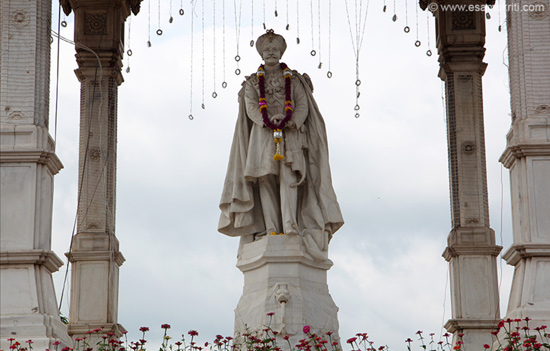
Chamarajendra Wadiyar X is famously
associated Swami Vivekananda. The maharaja and his wife had a private audience
with Swami Vivekananda which led to the setting up educational institutions and
also taking up women education and empowerment.
It is said the interaction gave birth to
setting up of the Mysore Representative Assembly in
1881, the first elected body in the country. This was the first modern,
democratic legislative institution of its kind in princely India.
The royal couple (Maharaja Chamarajendra Wadiyar X and Maharani Kempananjammani Vani Vilasa Sannidhana) is credited, amongst others with funding Swami Vivekananda’s journey to Chicago in 1893.
3.
Maharani Kempananjammani Vani Vilasa Sannidhana
Following the death of Maharaja Chamarajendra Wadiyar X, his wife Maharani Kempananjammani Vani Vilasa Sannidhana took over as the Regent, as her son was a minor. She ruled for around eight years, and is credited to giving shape to Mysore state’s education, irrigation, healthcare and economic activities in all the nine districts ruled by them. She pledged family jewels to
fund many people friendly projects like Krishnaraja Sagar (KRS) and VaniVilasa
Sagar dam.
The state saw mushrooming of higher
education institutions dedicated to women and girls. She was the main cause for
the rise of number of primary, middle, high schools and Colleges for girls.
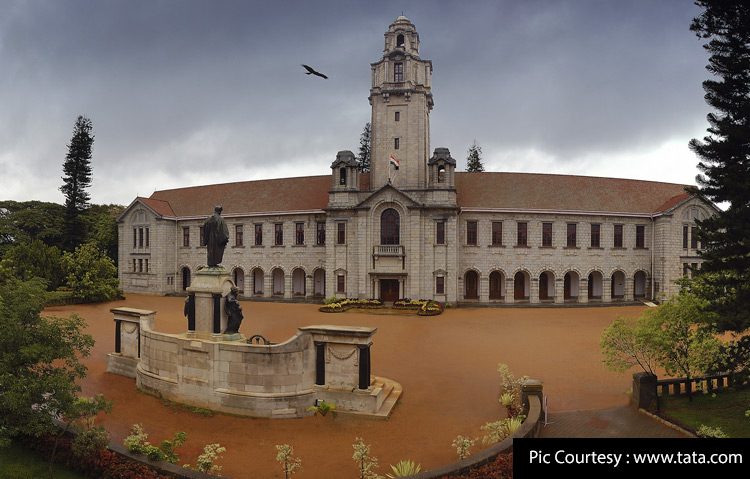 Land for IISc, funds for capital expenditure & an annual grant was provided by Maharani Vani Vilasa.
Land for IISc, funds for capital expenditure & an annual grant was provided by Maharani Vani Vilasa.
It was during Maharani Kempananjammani
Vani Vilasa Sannidhana rule that educating people was considered indispensable
for modernisation. She set up several higher education institutions across the
state. The most significant project the rulers got involved with was with
Jamsetji Nusserwanji Tata to set up Indian Institute
of Science (IISc), which has emerged as a world class research institute.
Here Maharani Kempananjammani Vani Vilasa Sannidhana played a key role by
offering land and financial assistance.
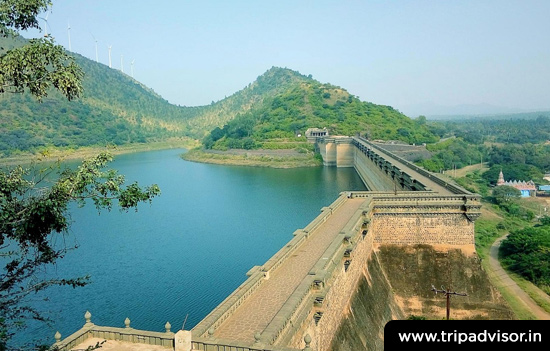 Vani Vilasa Dam.
Vani Vilasa Dam.
She was instrumental in taking up
construction of Vani
Vilasa Sagar dam in the Chitradurga district, under the Marikanive
irrigation project, which now provides irrigation facilities to around one lakh
acres. The Maharani also encouraged setting up Asia’s first hydroelectric project at Shivanasamundram and also took up
drinking water supply to Bangalore city from the Hesaraghatta Reservoir.
4.
Maharaja Krishnaraja Wadiyar IV
Maharaja Krishnaraja Wadiyar IV is famously called a philosopher-king, who was seen by Paul Brunton as living the ideal expressed in Plato's Republic. Maharaja has been compared to Emperor Ashoka by the English Statesman, Lord Samuel. Mahatma Gandhi called him Rajarshi, or "saintly king", and his kingdom was described by his followers as Rama Rajya, an ideal kingdom akin to the rule of Lord Rama.
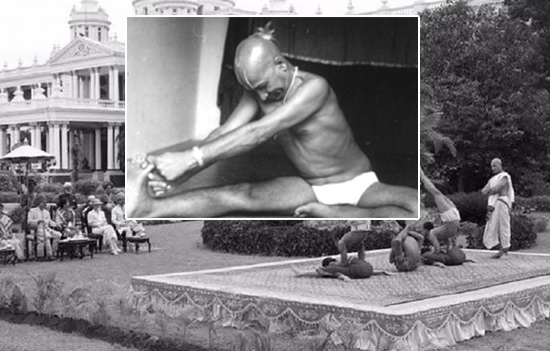 He supported Yoga by setting up the Palace Yogashala with T Krishnamacharya as its head.
He supported Yoga by setting up the Palace Yogashala with T Krishnamacharya as its head.
Maharaja Krishnaraja Wadiyar IV was an accomplished musician, and like his predecessors, patronised fine arts. For these reasons, his reign is often described as the 'Golden age of Mysore'.
Maharaja contributed immensely to the setting up of the Banaras Hindu University and was the its first
chancellor.
He also built the University of Mysore, which is attributed to be the first
university chartered by an Indian State.
The Indian Institute of Science at Bangalore, which was initiated during his mother's tenure as regent, was functionally started during his reign, with the gift, in 1911, of 371 acres (1.5 square km) of land and a donation of funds. In 1934, the Government of Mysore gifted 10-acre land in Bangalore to Nobel
laureate Sir C. V. Raman for the creation of a research institute, the Raman
Research Institute (RRI).
During the reign of Maharaja Krishna
Raja Wadiyar IV, Mysore state (comprising Bangalore, Chitradurga, Hassan,
Kadur, Kolar, Mysore, Mandya, Shimoga, and Tumkur) saw an all-round industrial
development.
Following
are the contributions made by Maharaja Krishna Raja Wadiyar IV in his
forty-year rule:
1. Minto Eye Hospital Bangalore, established in 1903, is among the world's oldest specialised ophthalmology hospitals.
2. Bangalore was the first city in India
to get electric street lights in 1905.
3. State Bank of Mysore established in
1913.
4. Mysore Agricultural Residential
School, Bangalore, established in 1913.
5. University of Agricultural Sciences, Bangalore was initially established in 1899 by Krishna Raja Wadiyar IV's mother Maharani Vani Vilas Sannidhana, with an initial grant of 30 acres as an experimental agricultural station.
6. Kannada Sahitya Parishat, Bangalore, was
established in 1915.
7. Formation of Mysore Social Progress
Association in 1915 to empower weaker sections of society.
8. Appointment of Sir Lesley Miller in
1918 to look into problems of backward classes and recommended reservation of
25% of jobs in the Government to non-Brahmins.
9. School of Engineering, Bangalore,
later UVCE, established in 1917.
10. Mysore State Railway (MSR) between
1916 and 1918, opened 232 miles of railway to traffic. By 1938 MSR had 740
miles of railway track.
11. The Mysore Chamber of Commerce
established in 1916.
12. Government Sandalwood Oil Factory,
Bangalore, established in 1917.
13. Wood Distillation Factory,
Bhadravathi in 1918.
14. Visvesvaraya Iron and Steel Plant
(VISL), Bhadravathi was started as Mysore Iron Works in 1923.
15. Mysore Paper Mills, Bhadravati,
established in 1936.
First Indian state to
enfranchise women (1923) - Long before women in America and other parts of the world were allowed to vote, they were given the right to do so in Mysore. He criminalized untouchability, banned child marriage for girls under the age of 8 years m gave special importance to girl’s education, scholarship for widowed girls and donated Rs 60 lakhs each year for spastic children.
Compulsory primary
education
- Primary education was made compulsory for everyone and in 1915, public
schools were directed to begin admitting Dalit children in an effort to give up
caste discrimination.
Krishna
Raja Sagar (KRS) dam, established in 1924
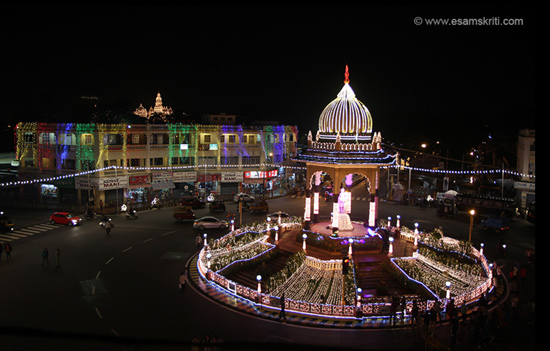 KR Circle, Mysuru lit up during Dussehra.
KR Circle, Mysuru lit up during Dussehra.
Mysore Medical College was established
in 1924. In 1925 more than 100 acres of land was donated to the establishment
of National Institute of Mental Health and Neurosciences (NIMHANS). Established
in 1927 Krishna Rajendra Hospital Mysore is attached to Mysore Medical College.
Vanivilas Women and Children Hospital, Bangalore was established in 1934.
The kingdom’s total expenditure on education increased from Rs.6,99,000 in 1902 to Rs.46,80,000 in 1927. A total of 8,000 schools were running in Mysore at that time with 515,000 pupils.
5.
Maharaja Jayachamarajendra Wadiyar
With India becoming Independent on
August 15 1947, monarchy ended in Mysore too. Jayachamarajendra Wadiyar voluntarily
surrendered his kingdom which became a part of the Independent India. A few
days prior to the declaration of Independence, the Maharaja executed an
Instrument of Accession on August 9, 1947, whereby the State acceded to the
Dominion of India.
For his seven year rule, Maharaja
Jayachamarajendra Wadiyar, is often referred to as the Philosopher King, who
focussed on preserving heritage while fostering progress of Mysore State.
In the first two years of his reign the
Maharaja toured the districts of the State, acquainting himself with the local needs
and tried to meet them. He announced a special grant of Rs. two lakhs for the
improvement of the malanad area (districts of Shimoga and Chikmagaluru, as also
the construction of a new general hospital and of a regulated market at
Davangere, and a water-supply scheme for Chitradurga.
During his tenure, one field that
witnessed phenomenal development was in education and setting up of modern
industries. In education, he established an Occupational
Institute or Polytechnic and an Institute of Indian Medicine in Bangalore. It was not a normal time, and a considerable portion of the State’s attention and energy were commissioned by the suzerain power for material aid in World War2.
He was instrumental in setting up modern
industries to cater to the WorldWar2. About 26 industrial concerns from Mysore
were engaged in the manufacture of war requirements. The training of 2,500 war
technicians was arranged. Land, buildings, and timber required from the state
were placed at the disposal of the army. In 1942 the National War Front was
introduced in the State to disseminate war information and maintain public
morale. In June 1943 the Maharaja opened a War Services Exhibition in Bangalore
which attracted 5 lakhs of visitors in eight days.
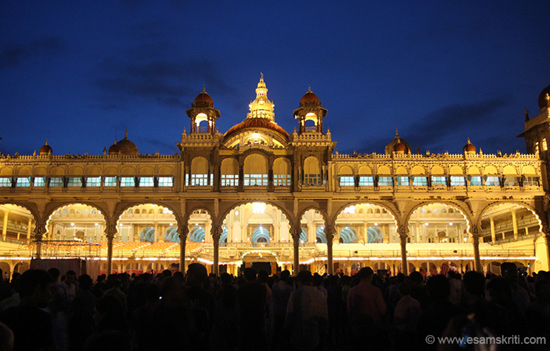 Mysore Palace attracts large number of tourists
Mysore Palace attracts large number of tourists
Birth of HAL
Among his many contributions to Mysore
and India was the birth of Hindustan Aeronautics Limited. Dr Deepti Navaratna,
a classical dancer and neuroscientist who has written the book The Maverick Maharaja, explains the story behind HAL’s creation.
The author describes the need for a fierce nationalist and visionary leader to bring together multiple interests for the benefit of their country. In this case, William Douglas Pawley, a notable businessman and US ambassador, was part of the Chinese Air Force’s First American Volunteer Group during World War II. After aiding in the creation and assembly of aircraft for combat and defeating the Japanese occupation of China, Pawley was searching for a home base in India. Simultaneously, entrepreneur Walchand Hirachand was looking to expand his company’s offerings.
At this time, a 21-year-old Wadiyar was crowned King of Mysore and recognized the
opportunity to establish an enterprise that would lead aerospace research and
manufacturing in India.
Thus, Hindustan Aircraft (HAL) was
established in 1940, reportedly conceived mid-air during a flight back from
America. According to this TOI
report, “The King gave 700 acres of land free for the HAL factory with an investment by the state of Rs 25 lakhs in shares.”
Today, HAL is a leading aerospace
company in India, providing design, development, and manufacturing services for
aircraft, helicopters, engines, avionics, and accessories.
The residents of Mysore State were
protected during the war by large scale air raid precaution arrangements and formation
of Civic Guards. Their economic interests were looked after by measures to
prevent inflation, grant of dearness allowance to official and industrial
labour, and securing food supplies.
The phenomenal
growth of Education under Maharaja Jayachamarajendra Wadiyar’s short rule may be seen by the growth of the Government’s Educational grant from Rs 54 lakhs in 1940 to Rs 2.75 crore in 1948. The number of Primary Schools rose from 6,400 to 9,800 and pupils from 2.31 lakhs to 4.80 lakhs.
On the irrigation front, 36 major works,
costing Rs 95 lakhs and bringing an additional 52,000 acres under irrigation, were
taken up, and in order to expedite these works a separate Chief Engineer for
irrigation was appointed. The works of other departments, like medical, health,
police, judicial, agricultural, industrial and rural welfare also saw great strides
under his rule.
Author
is a Bengaluru based journalist. eSamskriti.com is grateful to him for sharing.
Also
read
1. How
MAHARAJA of Mysore support to T Krishnamacharya led to the REVIVAL of Modern
Day YOGA
2. Contribution
of Travancore rulers to the advancement of Education in Kerala
3. Who
should get credit for launch of Chandraayan 3 mission
4. From Dakota to Tejas – the Mysore Royal Family contribution to Indian Aerospace